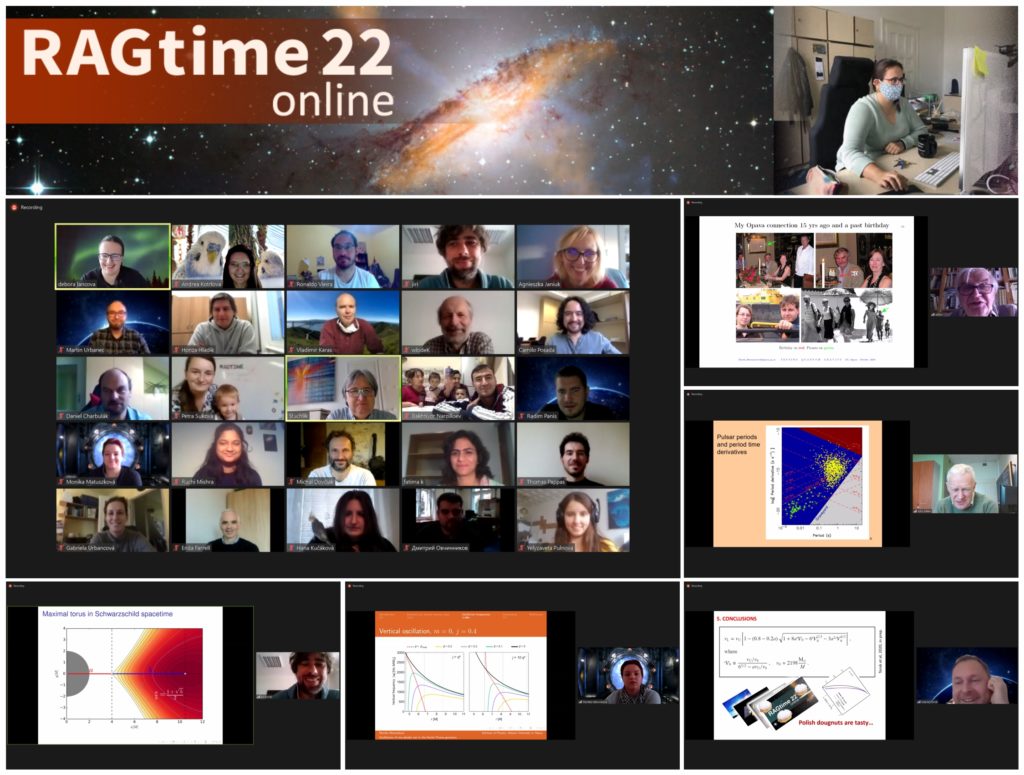
INTER-EXCELLENCE PROJECT LTI17018 carried out by SU Opava & ASU Prague

Our branch contact organization was established in 2017 within the framework of the INTER-EXCELLENCE Project No. LTI17018 (PIRX, Promotion and Development of International Scientific Cooperation in Relativistic Astrophysics and Preparation of X-ray Space Missions).
The PIRX is closely specialized in relativistic astrophysics, X-ray space missions and related issues. PIRX creates information, knowledge and infrastructure prerequisites for involving relevant entities from the Czech Republic in international R&D&I programs. In order to gain and share information on the possibilities of international scientific cooperation, PIRX focuses on information meetings and networking events, active search for information on support for international scientific cooperation, information on the possibilities of scientific cooperation in a defined area and information events and seminars.
In order to create the necessary infrastructure and to strengthen the institutional capacity for international scientific cooperation, PIRX implements also educational activities. These are aimed at the scientific staff on the possibilities of scientific cooperation in the field of preparation and implementation (or project management) of international scientific projects aimed at enhancing scientific excellence and publishing on the basis of the results of international scientific cooperation in the field of relativistic astrophysics.
Fundamental theories vs. LMXBs spectra and timing
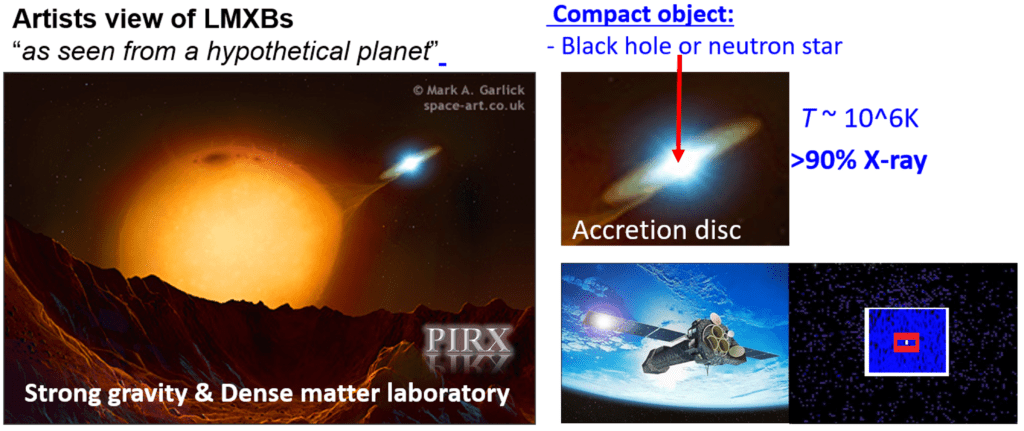
Observation and theory: The X-ray radiation absorbed by Earth atmosphere is studied using detectors on orbiting satellites. The observations allows to test fundamental physical theories under extreme conditions that are impossible to reach in terrestrial laboratories
LMXBs provide an unique chance to probe effects in the strong-gravity-field region. The way how electromagnetic radiation propagates in space, its time variability and shape of lines in its energetic spectrum are invaluable probes to physical behaviour of the matter in strong gravitational fields. Similiary, a systematic study of the properties of neutron stars allows us to explore superdense matter.

We extended our international collaboration in the field of relativistic astrophysics and X-ray space missions.
During the past year we explored the behaviour of epicyclic and other lowest-order oscillation modes for different geometrical thickness of the flow and compared the outputs to analytical results. In parallel we have explored a full parameter space determining the behaviour of non-axisymmetric radial and vertical epicyclic modes.
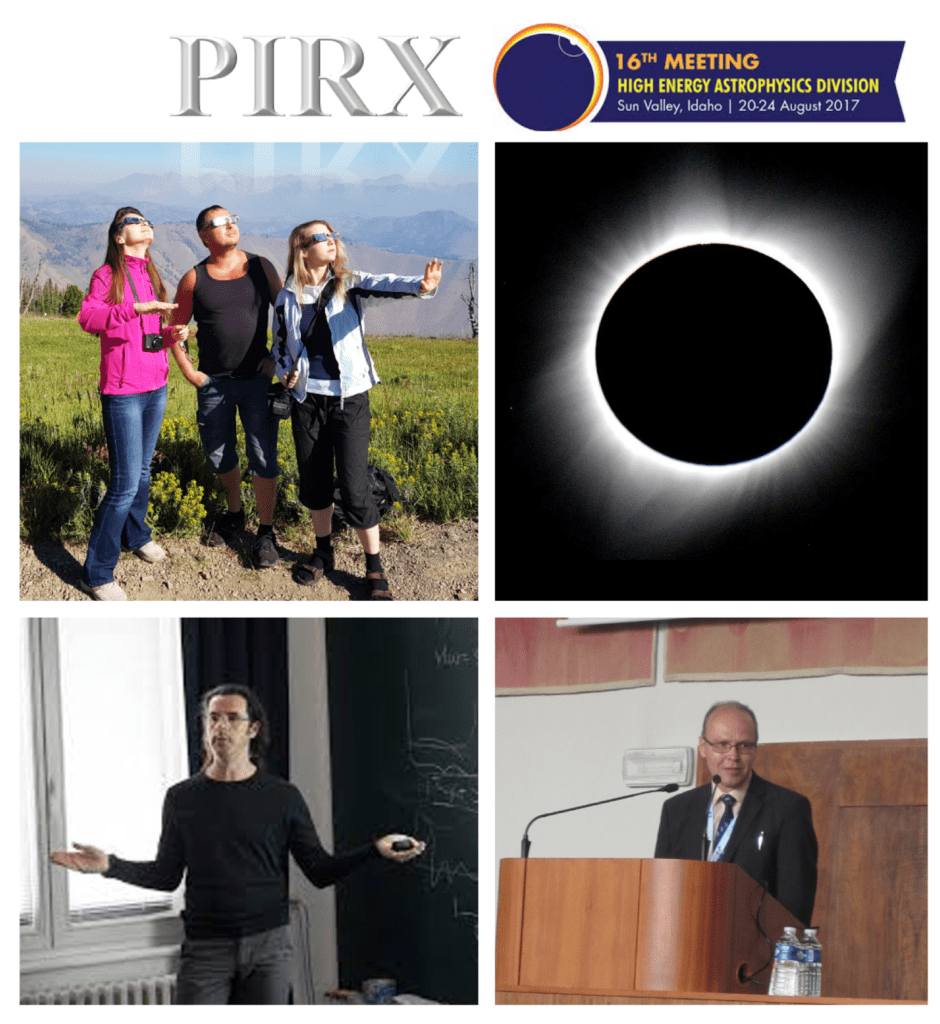
We carried out simulations of observational spectra and light curves resulting for models of oscillating tori based on the analytical formulae of Straub and Šrámková. Similar research direction concerning other accretion structures has been introduced in collaboration with prof. Luigi Stella (INAF, Rome). We completed our investigation of predictions of several X-ray variability models assuming objects alternative to black holes and neutron stars. We have extended our previous work on modelling the QPO phenomena in neutron star sources. We have found a surprisingly simple analytic relation that reproduces observational data of a group of several sources.
Our Branch Contact Organization supported namely the following activities and results: 1 international project application, 1 international contract, 7 research stays, 2 papers in prestigious journals, 1 conference proceedings book, 3 workshops, and 10 conference presentations.
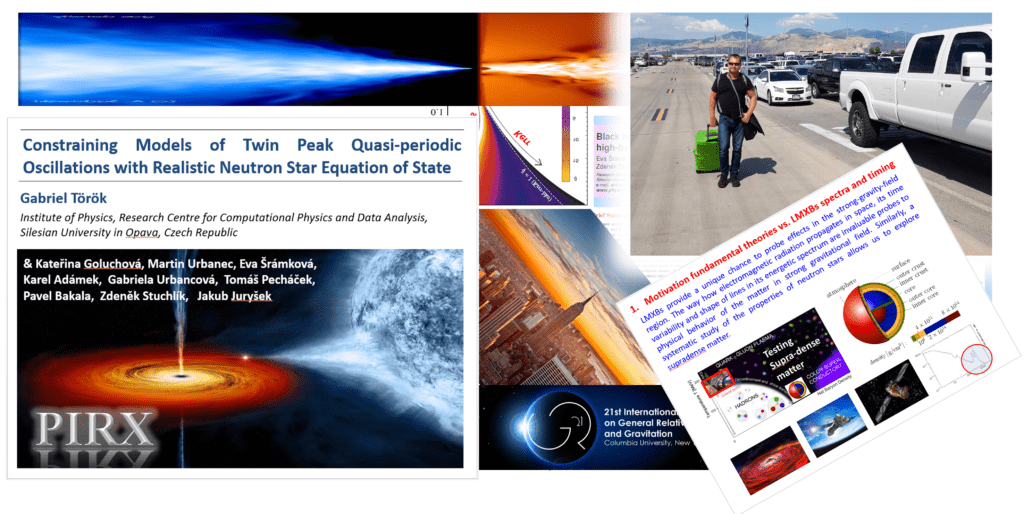

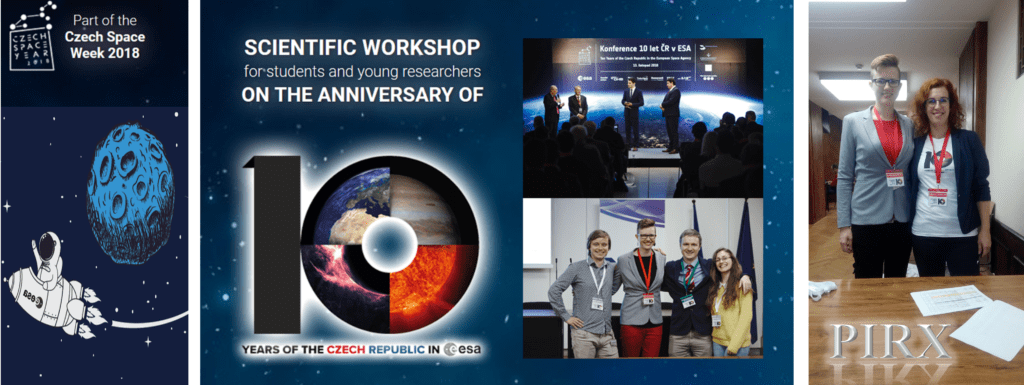
During the year 2018 we extended our collaboration by conclusion of 2 international contracts, specifically with the International Space Science Institute in Bern, Switzerland, and with the Istituto nazionale di astrofisica in Roma, Italy. We organized 3 workshops devoted to relativistic astrophysics and X-ray space missions.
During the year 2018 we investigated oscillation modes of accretion structures with non-constant angular momentum profiles. Furthermore we considered other non-geodesic effects that influence the behaviour and variability of accretion discs. Our analytical and numerical calculations showed that the orbits of particles are strongly affected by the effects of general relativity. In 2018 we extended our ray-tracing codes.
We continued in our effort in confronting the accretion disc models with the observational data. We focused namely on the expectation of scaling of the observed QPO frequencies with the compact object mass. In the context of black hole HF QPOs we investigated the implications of QPO models that arise for the exceptional extragalactic X-ray source XMMUJ134736.6+173403. Our findings strongly support evidence for the presence of an active galactic nucleus black hole (AGN BH). We completed the systematic study of behaviour of frequencies of perturbed geodesic motion which compares Kerr and Hartle-Thorne spacetimes and discusses the relevance of these spacetimes to numerical solutions of external spacetimes of astrophysical rotating axisymmetric objects. Last but not least, we started scientific cooperation with Black Hole Initiative at Harvard University in Cambridge. Within this collaboration we plan to utilize their KORAL numerical code simulations of the time dependent behaviour of accretion discs with different thickness. In addition to the above mentioned most important points we carried out a few more results that are connected to our research directions.
Activities in 2018 namely results in 2 international contracts, 1 consultations and information meeting, 2 international contracts, 3 international project applications, 6 research stays, 3 publications in prestigious journals and 27 conference presentations.
During the year 2019 we organised 2 workshop, 8 consultations and information meetings, signed 1 international contract, undertook 10 research stays, wrote 4 publications in prestigious journals and did 18 conference presentations.
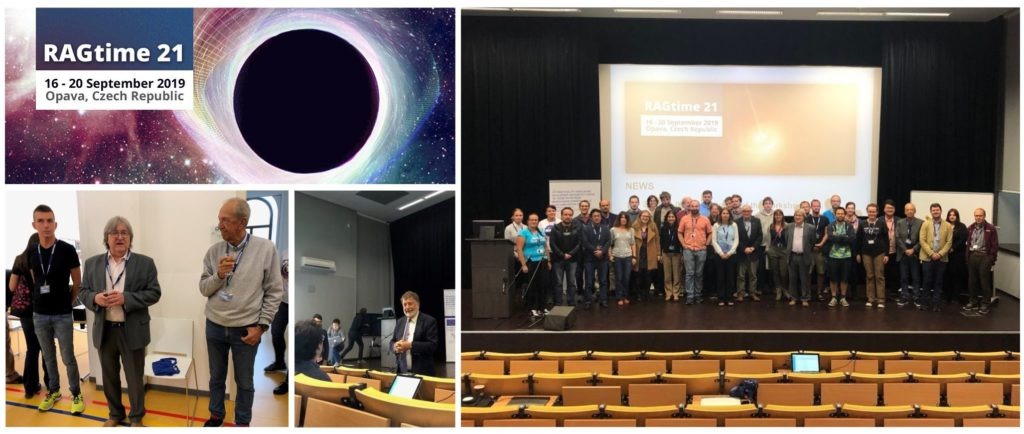
We completed our investigations of predictions of X-ray variability models that assume objects alternative to BHs and neutron stars. We explored parameter space which determines behaviour of epicyclic modes. Comparing the analytic and numerical results, we found the applicability of the simplified analytic approach to strongly vary across the large variety of QPO models. This was summarized in several recently completed papers. A special attention was given to a QPO model, previously proposed by our group, which deals with marginally overflowing oscillating tori. We found a surprisingly simple analytic relation that reproduces the observational data of a group of several sources.
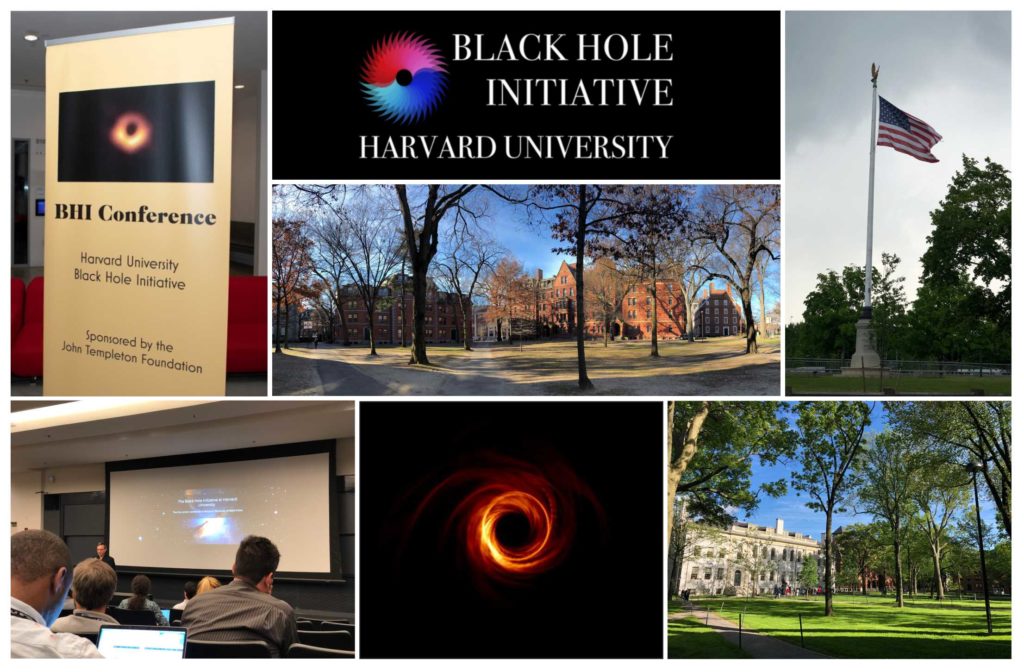
During the project, two very important findings were made and consequently published within rapid communication in prestigious journals. First, we investigated implications of QPO models that arise for the extragalactic source XMMUJ134736.6+173403. This source appears to be the most massive source that displays QPOs. Second, within the scientific cooperation with Black Hole Initiative at Harvard University, we identified a new type of accretion disc – the so-called “puffy disk”.
Activities in 2020 was highly incluenced by the COvid-19 pandemic, especially in the international collaborations and cross-borders activities. Most of the conferences we planned to attend was canceled, only small number was held online. Also, our own conference RAGtime was only online. Despite all the difficulties we were able to organise 2 workshops, 5 consultations and information meetings, sign 6 international contracts, submit 1 international project application, did 3 research stays, and publish 3 publications in prestigious journal, but present only 2 conference presentations.
